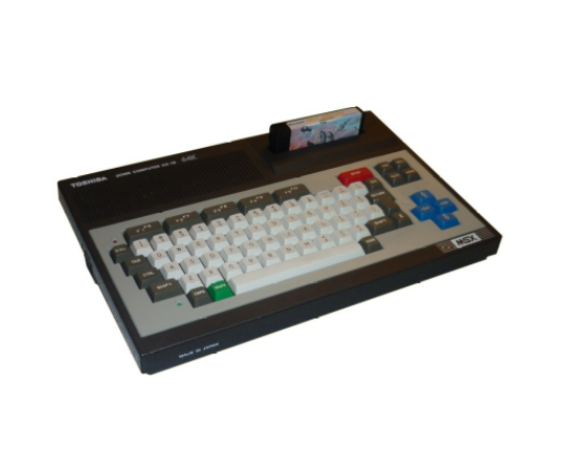The Home Computer That Set Records
Commodore VIC-20
In 1980, Commodore International released the VIC-20, a home computer that would become a landmark in the democratization of personal computing. Designed as an affordable, entry-level machine, the VIC-20 was aimed at families, hobbyists, and beginners who had previously been excluded from the rapidly expanding digital world. While its specifications were modest—1 KB of RAM expandable to 5 KB, a MOS Technology 6502 processor running at 1 MHz, and simple graphics and sound capabilities—the VIC-20’s accessibility and expandability made it one of the most influential home computers of its era. It demonstrated that computing could be approachable, affordable, and engaging, laying the groundwork for the home computer revolution of the early 1980s.
The VIC-20’s design philosophy reflected Commodore’s understanding of the market. Unlike more expensive machines such as the Apple II or the early IBM personal computers, the VIC-20 was deliberately inexpensive, with a retail price under $300. This made it accessible to households that had previously considered computers beyond their means. Despite its limitations, the machine provided a full computing experience: it ran Commodore BASIC built into ROM, allowing users to write programs, experiment with algorithms, and explore the emerging field of home computing. The built-in keyboard, cassette-based storage, and television output made the system intuitive and easy to set up, further lowering the barrier to entry for first-time users. Gaming and entertainment were central to the VIC-20’s appeal. Its color graphics, though limited to a resolution of 176×184 pixels with 16 colors, enabled engaging and visually interesting games. Sound was handled by a simple 3-voice SID chip variant, which allowed programmers to create catchy music and audio effects. The VIC-20’s library quickly expanded with hundreds of games, covering genres from arcade-style action and platformers to educational and puzzle titles. The ease of producing cartridges and tape-based software encouraged a burgeoning ecosystem of third-party developers. This not only increased the variety of available software but also created opportunities for independent developers, a precursor to the modern indie game scene.
The VIC-20 was particularly notable for its impact on consumer perception of computing. For many users, it was the first exposure to programming. Typing in BASIC commands, experimenting with loops, and creating simple games instilled computational thinking and problem-solving skills. The system’s affordability meant that parents could purchase it for educational purposes, while children and teenagers could explore the creative possibilities of coding in a playful environment. In this sense, the VIC-20 served as a bridge between entertainment and education, showing that computers could be both fun and intellectually stimulating. Another critical aspect of the VIC-20’s influence was its expandability. Users could increase memory via expansion cartridges, connect peripherals such as printers and modems, and even experiment with hardware modifications. This fostered a culture of experimentation and innovation among hobbyists, many of whom would later become professional developers, engineers, or entrepreneurs. The VIC-20 thus played a formative role in the early home computing ecosystem, encouraging technical literacy and nurturing a generation of enthusiasts who would shape the future of technology. Despite its success, the VIC-20 had inherent limitations. Its modest memory restricted the complexity of software, and graphics and sound capabilities lagged behind more advanced competitors. Nevertheless, these constraints inspired creativity and efficiency among developers, who devised clever programming techniques to maximize the machine’s potential. Titles such as VIC Soccer, Gorf, and Jupiter Lander exemplified the ingenuity required to produce engaging software within the system’s limits, demonstrating that innovation often thrives under constraint.
The commercial success of the VIC-20 was remarkable. The sales of VIC20 eventually exceeded 2.5 million units. It was the first computer that sold over million units, just few weeks before Apple II reached that spot January 1983. This made it one of the first mass-market home computers and cemented Commodore’s reputation as a leader in accessible computing. The VIC-20’s success also influenced the development of its more powerful successor, the Commodore 64, which built on its strengths—compatibility, affordability, and expandability—while significantly enhancing memory, graphics, and sound capabilities. In this sense, the VIC-20 can be seen as a critical stepping stone in the evolution of home computing, bridging the gap between simple hobbyist machines and more sophisticated, mainstream systems.
Culturally, the VIC-20 helped establish the concept of the home computer as a versatile and personal device. It encouraged users to experiment, create, and learn, shifting the perception of computers from professional or industrial tools to devices that could reside in living rooms, bedrooms, and classrooms. Its influence extended to software development, marketing strategies, and even educational policy, inspiring publishers and educators to embrace digital technology as a means of fostering learning and creativity. In conclusion, the Commodore VIC-20 was far more than an entry-level home computer. It represented a paradigm shift in computing accessibility, demonstrating that technology could be affordable, engaging, and educational. By popularizing BASIC programming, fostering a vibrant software ecosystem, and encouraging experimentation, the VIC-20 left a lasting legacy that shaped both the personal computer industry and the broader culture of digital creativity. Its influence is evident in the generations of programmers and designers it inspired, the evolution of home computing hardware, and the enduring popularity of Commodore’s design philosophy. The VIC-20 stands as a testament to the transformative power of accessible technology, illustrating how a modest machine can ignite innovation, curiosity, and lifelong engagement with computing.













